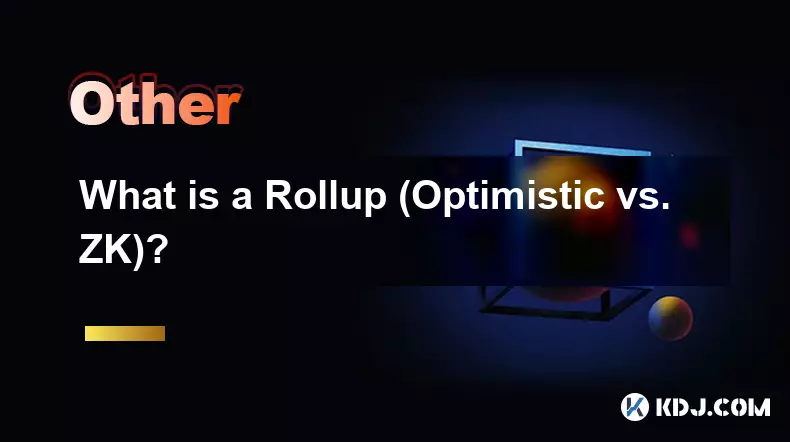-
 bitcoin
bitcoin $114684.631706 USD
-0.87% -
 ethereum
ethereum $4228.677447 USD
1.58% -
 bnb
bnb $1294.880693 USD
-1.16% -
 tether
tether $1.000819 USD
-0.02% -
 xrp
xrp $2.605138 USD
2.79% -
 solana
solana $209.908690 USD
5.89% -
 usd-coin
usd-coin $0.999903 USD
-0.03% -
 dogecoin
dogecoin $0.213423 USD
2.93% -
 tron
tron $0.322721 USD
-0.10% -
 cardano
cardano $0.727247 USD
3.66% -
 hyperliquid
hyperliquid $42.339456 USD
6.05% -
 chainlink
chainlink $19.910811 USD
5.16% -
 ethena-usde
ethena-usde $1.000557 USD
0.00% -
 stellar
stellar $0.349734 USD
2.69% -
 bitcoin-cash
bitcoin-cash $543.848687 USD
-0.21%
How many types of blockchain are there?
The different types of blockchain technology offer customized solutions for various applications, from public transparency to private control and collaborative governance.
Oct 04, 2024 at 09:24 am

Blockchain technology, a revolutionary advancement in the digital realm, has gained immense popularity in recent years, transforming various industries and offering numerous advantages. At its core, blockchain is a distributed ledger system that records transactions in a secure and immutable manner, ensuring transparency and reliability.
While blockchain initially emerged in the context of cryptocurrency, its applications have far surpassed the financial sector, extending to a wide range of use cases across industries, from healthcare to supply chain management. As blockchain technology continues to evolve, various types of blockchain have emerged, each tailored to specific requirements and applications.
1. Public Blockchains:Public blockchains are open and accessible to anyone with an internet connection. They are characterized by their decentralized nature, with no central authority controlling the network. Anyone can join the network, validate transactions, and add new blocks to the chain. The most well-known example of a public blockchain is Bitcoin, the pioneer of cryptocurrency. Other popular public blockchains include Ethereum, Litecoin, and Dogecoin.
2. Private Blockchains:In contrast to public blockchains, private blockchains are permissioned networks, meaning that only authorized parties can participate in the network. They offer greater privacy and control to organizations, as access is restricted to a specific group of users. This type of blockchain is often utilized by enterprises and governments seeking to implement blockchain solutions within their own organizations or consortiums.
3. Hybrid Blockchains:Hybrid blockchains combine elements of both public and private blockchains, offering a balance between openness and privacy. They allow for selective access to the blockchain, where certain aspects are open to the public while others remain private. For instance, a hybrid blockchain could allow public access to view transaction records while restricting the ability to modify or add new blocks to authorized parties.
4. Consortium Blockchains:Consortium blockchains are similar to private blockchains in terms of their permissioned nature. However, they involve a group of pre-selected organizations, often from the same industry, that jointly manage and maintain the blockchain. Each organization has a predetermined role and level of access within the network, ensuring collaboration and trust among the participants.
5. Sidechains:Sidechains are independent blockchains that operate alongside a main blockchain, such as Bitcoin or Ethereum. They provide a way to extend the functionality of the main blockchain and explore different applications without compromising the security of the main chain. Sidechains enable the development of custom features, experimenting with new consensus mechanisms, and enhancing privacy and scalability.
Conclusion:The diverse types of blockchain technology provide organizations and individuals with a range of options tailored to their specific needs and requirements. Whether seeking public accessibility, enhanced privacy, permissioned access via private blockchains, or collaborative governance through consortium blockchains, there is a blockchain type suited for any application. As blockchain technology continues to mature and innovate, it is expected to further transform industries and create new opportunities for businesses and individuals alike.
Disclaimer:info@kdj.com
The information provided is not trading advice. kdj.com does not assume any responsibility for any investments made based on the information provided in this article. Cryptocurrencies are highly volatile and it is highly recommended that you invest with caution after thorough research!
If you believe that the content used on this website infringes your copyright, please contact us immediately (info@kdj.com) and we will delete it promptly.
- XRP Price Prediction: Weekend Rollercoaster or Rally?
- 2025-10-12 08:45:16
- Bittensor (TAO): Super Bullish Signals Point to Potential 2x Rally
- 2025-10-11 10:25:12
- Silver Price Correction: Navigating the Dip & Identifying Key SEO Keywords
- 2025-10-11 10:25:12
- Decoding Crypto Trends: Bittensor's Bull Run, Cardano's Dip, and LivLive's Presale Buzz in 'Uptober 2025'
- 2025-10-12 08:45:16
- MoonBull: The Crypto Meme Coin Promising 1000x Gains?
- 2025-10-11 10:30:01
- Crypto Payroll Revolution: Stablecoins, Altcoins, and the Future of Salary Payments
- 2025-10-11 10:30:01
Related knowledge

What is the "hash rate" of a blockchain network?
Oct 10,2025 at 03:55pm
Understanding Hash Rate in Blockchain Networks1. The hash rate refers to the total computational power being used to process transactions and mine new...

How does blockchain technology actually work?
Oct 11,2025 at 02:36pm
Understanding the Core Mechanism of Blockchain1. At its foundation, blockchain is a decentralized digital ledger that records transactions across mult...

What is a token economy?
Sep 20,2025 at 12:18am
Understanding the Foundations of a Token Economy1. A token economy in the context of cryptocurrency refers to a system where digital tokens are used a...

What are suitable application scenarios for blockchain?
Sep 20,2025 at 03:19am
Decentralized Finance (DeFi) Platforms1. Blockchain enables the creation of financial services without centralized intermediaries, allowing users to l...

What is a Rollup (Optimistic vs. ZK)?
Sep 22,2025 at 03:00pm
Understanding Rollups in Blockchain Technology1. Rollups are layer-2 scaling solutions designed to increase transaction throughput on blockchains like...

What is blockchain scalability?
Sep 19,2025 at 06:18am
Understanding Blockchain Scalability1. Blockchain scalability refers to a network's ability to handle an increasing number of transactions without com...

What is the "hash rate" of a blockchain network?
Oct 10,2025 at 03:55pm
Understanding Hash Rate in Blockchain Networks1. The hash rate refers to the total computational power being used to process transactions and mine new...

How does blockchain technology actually work?
Oct 11,2025 at 02:36pm
Understanding the Core Mechanism of Blockchain1. At its foundation, blockchain is a decentralized digital ledger that records transactions across mult...

What is a token economy?
Sep 20,2025 at 12:18am
Understanding the Foundations of a Token Economy1. A token economy in the context of cryptocurrency refers to a system where digital tokens are used a...

What are suitable application scenarios for blockchain?
Sep 20,2025 at 03:19am
Decentralized Finance (DeFi) Platforms1. Blockchain enables the creation of financial services without centralized intermediaries, allowing users to l...

What is a Rollup (Optimistic vs. ZK)?
Sep 22,2025 at 03:00pm
Understanding Rollups in Blockchain Technology1. Rollups are layer-2 scaling solutions designed to increase transaction throughput on blockchains like...

What is blockchain scalability?
Sep 19,2025 at 06:18am
Understanding Blockchain Scalability1. Blockchain scalability refers to a network's ability to handle an increasing number of transactions without com...
See all articles










































































